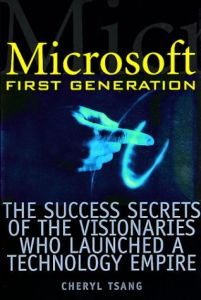Rejoignez getAbstract pour lire le résumé !

Rejoignez getAbstract pour lire le résumé !
Cheryl Tsang
Microsoft First Generation
The Success Secrets of the Visionaries Who Launched a Technology Empire
Wiley, 2000
Aperçu
How did Microsoft really get cranked up? Take it from twelve people who were there: late hours, competitive colleagues, demanding bosses and a cutthroat office environment — but, hey, it worked.
Recommendation
Taking a Studs Terkel Working-style approach to the world’s most powerful company, Cheryl Tsang presents Microsoft as seen by 12 people who worked there before 1990 and participated in its creation. Given that she words everything with cautious courtesy and that her husband, Rick Tsang, is a Microsoft higher-up, one wonders if the author dared to be sharp or critical. Still, she clearly has inside knowledge and strong internal relationships at Microsoft. If you’re interested in Microsoft - and since it is so frighteningly powerful, you kind of have to be - you will learn some interesting things here, even if many salient points are buried in overly polite language. But perhaps the book’s most valuable asset is its insight into Microsoft’s no-holds-barred management style - a confrontational process that flies in the face of much current management theory. getabstract.com won’t bother you now with quibbles about nepotism: Face it, this is must reading for Microsoft junkies. (getAbstract.com note: Despite the 2000 copyright date, nary a word to be found about that little antitrust matter.)
Summary
About the Author
Cheryl Tsang is an award-winning business journalist and fiction writer. She lives in Bellevue, Washington.





















Comment on this summary